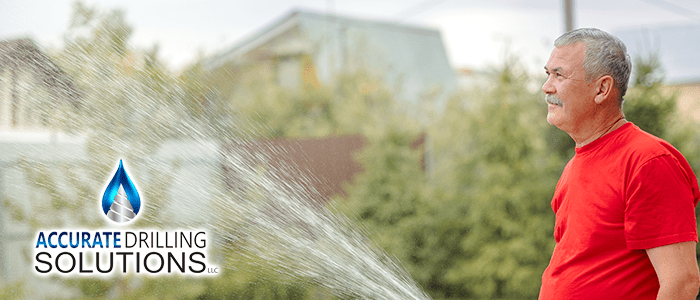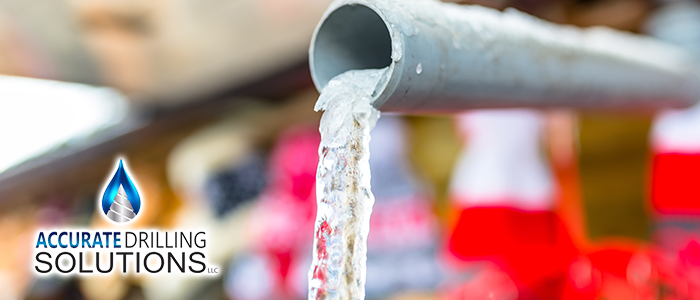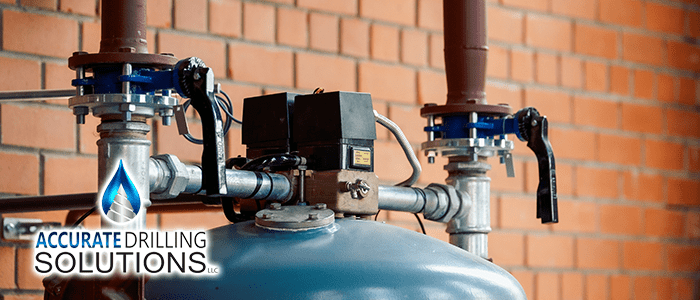
Corrosive Water and Your Well
Corrosion occurs when metals are chemically or physically altered by the environment. Well water can cause corrosion within your home’s plumbing system by gradually dissolving the pipes, fixtures and fittings.
The taste of your water may be due to metallic or bitter elements in the aquifer, or because it has metal from your plumbing leeching into it. Green or blue stains from copper in tap water and small leaks from your plumbing can also be signs that corrosive elements are present.
What Causes Corrosive Well Water?
A low-pH water supply is the primary cause of corrosion. The EPA recommends that household water be kept within the range of 6.5 and 8.5 on its pH scale, with 7 considered neutral. If your home’s plumbing system was built before 1987 and your water supply is too low of a pH, the lead solder used to connect copper pipes may be dissolving into the water.
Low pH water typically has fewer dissolved minerals than “hard” water, which is why it’s often called “soft.” However, some dissolved solids are necessary to control the taste of water and prevent corrosion. Depending upon the minerals that have been dissolved into the water, concentrations are between 50 to 150 milligrams per liter. The EPA has recommended that dissolved solid levels should be no higher than 500 mg/L. These minerals include: bicarbonate, calcium, magnesium, nitrate, phosphate and sodium.
Handling your corrosive well water
If your water supply has been shown to be corrosive, you can take several steps to address the issue. You need to choose the option that is appropriate for your situation. A well water professional from Accurate Drilling can offer you information and the best option for treatment.
- Option 1: Replace the Plumbing
If your plumbing is short, replacing it may be a good idea. If only part of the pipe is replaced, water will continue to corrode other sections, so it’s best to rip the whole thing out. If you are thinking of replacing your copper plumbing with plastic, a good alternative would be the piping material known as PEX or cross-linked polyethylene. Make sure that any installation is certified for use in drinking water systems. PEX that has been certified by NSF International will have the code “NSF” and “Drinking Water” written on it.
- Option 2: Reduce Corrosive Elements in Your Water by Treating It
Low pH is one of the most common causes of corrosive water. However, solutions such as neutralizing beds made with calcium carbonate can treat this problem relatively easily. Water treatment systems use a point-of-entry method that works to neutralize the water’s acidic nature and raise its ph levels.
- Option 3: Treat Your Water To Reduce Dissolved Metals
The best way to address the issue is by reducing metal dissolution. This can be done with an installation that captures dissolved metals before they reach further down into your water supply. For example, water softeners can remove iron from hard water. Catalytic oxidizing filters and oxidation filtration systems are two common iron treatment options.
If iron bacteria is also present, you may have to use chlorination as an additional treatment. Activated charcoal, reverse osmosis and distillation can all remove lead and copper from drinking water.
Other Ideas
Although the level of corrosion may not be severe enough to cause a major problem, dissolved metals like lead or copper may still be present at levels that exceed EPA standards. Long-term contact with plumbing can cause metals to leach out of your pipes.
Water that has been sitting in plumbing for many hours will contain the highest concentrations of pollutants. To ensure low levels of these metals in drinking water, test the water before you drink it.
A second sample should be tested after the water has run for 3 to 5 minutes. If a safe level of contaminants is found, it’s okay to drink—but only if you’ve flushed your plumbing lines first. If you need to drink water throughout the day, keep a pitcher of cold, flushed water in your refrigerator.
At Accurate Drilling, we can help you to determine the best course of action to address corrosive water issues. If you have any questions, give us a call. We’re always ready to help.
continue reading
Related Posts
Tampa Well Water Quality: Your Complete 2025 Guide Well water
Addressing Water Pressure Issues in Wells: Expert Solutions Water pressure
Benefits of Water Filtration Systems for Well Owners in Central





